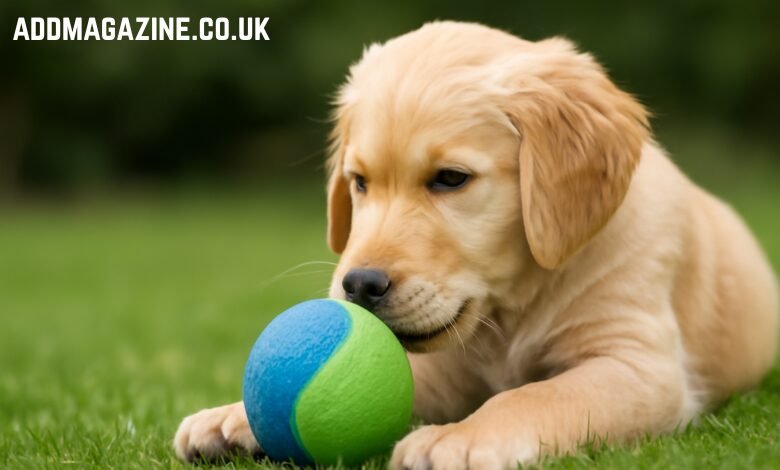Raising a puppy is an incredibly rewarding experience, one that brings joy and companionship into a home. However, it’s important to recognize that the process involves not just the basic needs of feeding and training, but also significant play and interaction. A crucial part of this developmental stage is something called valplekar, a Swedish term that translates to “puppy time” or “puppy play.” While it might seem like a simple concept, valplekar plays a significant role in the health, behavior, and socialization of a young dog.
In this article, we will explore the concept of valplekar, its importance for puppies, and how it aids in their growth into well-adjusted, confident adult dogs. Whether you are a new puppy owner or a seasoned pet parent, understanding the value of valplekar will help ensure your puppy develops into a happy and healthy canine companion.
What is Valplekar?
Valplekar, literally translating to “puppy play” in Swedish, encompasses all the activities puppies engage in to socialize, learn, and grow. These activities can be structured or unstructured and can vary from mental exercises to physical play. Valplekar is not just about fun; it’s about teaching puppies essential skills that will help them interact positively with humans and other dogs, learn boundaries, and develop physical fitness.
For puppies, playtime is more than an enjoyable pastime; it’s a form of learning. Through play, puppies explore the world, learn how to communicate, and strengthen the bonds they share with their owners and other dogs. Valplekar ensures that puppies develop the appropriate behavior that will last throughout their adult lives.
The Importance of Play in a Puppy’s Development
Puppyhood is a crucial period in a dog’s life, and how a puppy spends this time can significantly affect its future. Just as children need play to develop their social, cognitive, and physical skills, puppies rely on valplekar to develop essential life skills. These skills include:
1. Socialization
Puppy play is one of the most important ways to ensure that a dog grows up to be well-adjusted and friendly. Socialization is the process of exposing a puppy to various environments, people, animals, and situations. Through valplekar, puppies learn how to interact with other dogs, people, and their surroundings.
During play, puppies learn essential behaviors like appropriate greetings, respect for personal space, and non-aggressive play techniques. They also learn how to respond to body language and voice cues, which can be critical in avoiding potential conflicts with other animals or humans in the future.
2. Mental Stimulation
Puppies are naturally curious creatures, and their minds are constantly at work as they explore their surroundings. Valplekar helps stimulate their brains and encourages problem-solving. Through games that involve puzzles or challenges, puppies learn how to think critically, plan their actions, and understand cause and effect.
Mental play exercises, such as hide-and-seek or interactive toy games, can provide a fun way for puppies to build their cognitive skills. This type of mental stimulation helps prevent boredom and can reduce destructive behaviors in puppies, such as chewing on furniture or digging.
3. Physical Development
Physical exercise is essential to a puppy’s overall health and well-being. Valplekar encourages puppies to be active, strengthening their muscles, improving coordination, and building stamina. Physical play includes activities such as fetch, tug-of-war, or agility training, all of which provide essential exercise for developing motor skills.
A puppy’s early physical play helps them develop a sense of balance and coordination, which is crucial for their growth. Regular physical activity also promotes healthy joints and muscles, reducing the risk of developmental issues later in life.
4. Learning Boundaries and Self-Control
In addition to socialization and mental stimulation, valplekar also plays a critical role in teaching puppies important life lessons. Through play, puppies learn self-control, impulse management, and boundaries. These lessons are crucial for developing good manners and preventing undesirable behaviors in adulthood.
For instance, during play, a puppy may learn that biting too hard is unacceptable or that too much jumping on people can lead to a negative consequence. This is especially important for puppies as they have a tendency to explore the world with their mouths and paws, and playtime helps them learn how to interact appropriately without causing harm.
Different Types of Puppy Play
Valplekar is not just about chasing a ball or tugging on a rope; it can take many forms, depending on the activity and the puppy’s individual needs. Below are some common types of puppy play that contribute to their growth and development:
1. Structured Play
Structured play involves activities that are planned and often guided by an owner. These activities can include obedience training, fetch, or agility courses. Structured play is designed to teach specific skills or behaviors and is typically used to reinforce positive habits and good manners.
Examples of structured play include:
- Fetch: A great physical activity that also teaches retrieval skills and reinforces the idea of returning objects to their owners.
- Tug-of-War: A game that helps puppies practice self-control and learn when to stop pulling. It’s essential to establish clear boundaries for this game.
- Agility Training: A fun activity that helps puppies improve their coordination and balance. Agility courses can include obstacles like tunnels, jumps, and weave poles, which provide physical and mental challenges.
2. Unstructured Play
Unstructured play, on the other hand, allows puppies to explore on their own terms. This form of play is less guided and more about allowing the puppy to follow its instincts and curiosity. Unstructured playtime is equally important for a puppy’s development, as it helps them learn autonomy and discover the world in a low-pressure environment.
Examples of unstructured play include:
- Free Play with Other Puppies or Dogs: Allowing puppies to interact with one another in a safe environment helps them learn the rules of doggy socialization. They practice communication through play and develop their social skills.
- Exploring Outdoors: Allowing puppies to explore a safe outdoor space is a great way for them to encounter new smells, sounds, and sights, stimulating their senses.
3. Interactive Play with Humans
Puppies also need to engage in play with their human family members to strengthen their bond and develop trust. Interactive play includes games like hide-and-seek, fetching toys, or teaching them simple tricks. These activities help foster a relationship of mutual respect and affection.
Interactive play also provides opportunities for training and reinforces positive behavior through rewards and praise. Playing with your puppy in a structured manner enhances the bond between you, making it easier to train and build a relationship of trust.
Benefits of Valplekar Beyond Physical Play
While valplekar is often associated with physical play, it has a range of benefits that go beyond just exercise. Here are several benefits to consider:
1. Emotional Well-Being
Puppies, just like humans, need emotional support and reassurance as they grow. Playtime with their owners or other dogs can provide a sense of security and emotional comfort, reducing stress and anxiety. Engaging in regular play also allows puppies to release pent-up energy, preventing frustration and behavioral issues.
2. Improved Behavior
Valplekar contributes to good behavior by teaching puppies appropriate social cues and boundaries. Well-played puppies are generally happier, better-behaved, and more likely to adapt to new situations with ease. Consistent, positive play experiences help puppies learn what is acceptable and what isn’t, leading to a well-adjusted adult dog.
3. Strengthening Bond with Owners
The act of playing with a puppy can significantly enhance the bond between the dog and its owner. This connection is vital for effective training, as a puppy that trusts its owner is more likely to respond well to cues and commands. Through play, owners and puppies develop mutual respect and affection, which forms the foundation of a healthy relationship.
Conclusion
Valplekar, or puppy play, is not just a fun pastime; it is a fundamental aspect of a puppy’s development. From socialization to mental stimulation, physical exercise, and emotional well-being, playtime shapes a puppy into a balanced, confident, and well-adjusted dog. By ensuring that puppies receive a variety of play experiences, both structured and unstructured, we set them on the path to becoming happy, healthy adult dogs.
As a puppy owner, it’s essential to recognize the importance of valplekar and make time for play in your puppy’s daily routine. Whether you’re engaging in a structured game or allowing your puppy to explore and interact with others, each moment of play is an opportunity for growth and bonding. Valplekar is more than just fun—it’s an investment in your puppy’s future well-being.




